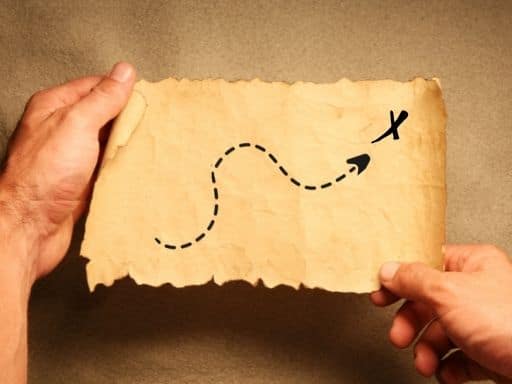5 Characteristics of Highly Effective Teams

Obviously, managers want to make improvements that lead to positive changes within the team. In fact, many leaders focus just on this part of the leadership process.
However, sometimes it is helpful to take a step back in order to recognize when a team is working effectively. Managers often overlook this important part of this process. The workings of a highly effective team are not always obvious or intuitive to everyone. We sometimes don’t recognize our team members when a team is doing well.
So, what are characteristics of highly effective teams?
(1) Highly Effective Teams are Mission-Oriented

Bringing a team together to consider questions like, “What are we creating?” “How do we want to make a positive contribution to our organization?” “How will we change the world?” can be profound. Sometimes we limit ourselves unnecessarily. Teams that use this perspective to create a mission statement or are able to rally around an existing mission can achieve great things.
Your mission statement is like the X that marks the spot on a treasure map. The road to get there will likely not be a straight line. But your team always wants to be moving toward the positive end goal.
By the way, you may have a corporate mission statement but don’t plan your activities around it. Or perhaps the corporate mission and vision is a little vague. If you are experiencing any of these challenges, take a look at this post. What Are Mission, Vision and Value Statements (with Examples.)
(2) Highly Effective Teams Build Solid Trust.

Effective teams operate in an environment where they have each others’ backs. They take risks and share successes and praise.
Even more important, though, they are quick to reveal missteps. Teams with low trust see mistakes as an embarrassment. They want to hide these missteps and lay blame on others. (“They are all out to get me!)
When teams have a high level of trust, though, they see mistakes as an important step to improvement. (“Now we know what not to do. Let’s see if we can find a better way next time!”)
The earlier we uncover a mistake, the easier they are to fix. Another great benefit is that the entire team learns from the process Operating in a trust-filled environment breaks down barriers and allows people to be more vulnerable.
If your team needs a few new ideas to build more solid trust, take a look at this post. 7 Expert Ways to Build Trust in a Team.
(3) Highly Effective Teams Debate Positively.

On the other hand, if all a team does is agree and go along to get along, this is a sign of trouble. Effective teams debate. This debate allows the team to improve.
Granted, it may feel uncomfortable to argue. But that is why it is so important for the leader to create a safe, trusting environment. (See step one above.) Thanks to mutual trust, this debate is an invaluable exercise to flesh out ideas, concepts, and strategies.
One good strategy to spur debate is to assign someone to play the Devil’s Advocate role during a discussion. Rotate the responsibility among team members as needed. Debating, challenging, and defending ideas creates better ideas. To an outside observer, it may seem like chaos or dissension, but for effective teams, it’s what causes continuous improvement.
Want a few easy ways to help your team resolve conflicts? Take a look at this post. 7 Turnkey Conflict Resolution Strategies.. Cover these ideas before starting your debate sessions.
(4) Highly Effective Teams Cooperate with Each Other and Gain Cooperation from Others.

Interestingly, though, when you focus on the early stages, this stage is much, much easier. You create a culture of trust and teamwork. So, the team members each WANT to help each other. All you have to do as the leader is nourish the results you are already receiving. Praise your team members for their accomplishments. Tell them often how important they are to the success of the company.
Then, if you find that your team members are not cooperating at a high level, back up a step or two. Work more on building the trust level again. Or, focus on reducing negative conflicts and increasing positive debate.
If you have created a team environment of trust and reduced conflict, here are a few ways to build cooperation from your team. 7 Valuable Ways to Build Cooperation Among Your Team.
(5) Highly Effective Teams have a Culture of Leadership

Effective teams don’t necessarily have to have a single great leader to perform well. In fact, when team members are not worried about who gets the credit, they go out of their way to serve each other. As new challenges pop up requiring different expertise, different members of the team take on a leadership role.
None of this happens by accident, though. It takes time and a conscious effort focusing on the first five steps in this process. So, although a highly effective team doesn’t require a single great leader to perform. It does require a single great leader to first create the highly effective team in the first place.
A great team is like a grapevine. The farmer first must plant and nurture the seed. Over a few years, the farmer will need to prune and nourish the vine. Eventually, though, the vine will develop a little fruit. Then, a lot of fruit. At this point, the farmer’s role is still important but much less needed than in the early stages. The farmer could walk away from the vine, and the vine would still produce fruit (for a while.)
Your team is like the vine. Spend time in the early stages to create a team culture — a leadership culture. Your team will eventually begin to seek to learn and improve on their own. When a team has a culture of leadership, they own their work. They also support each other because they want the team to be more successful than any one individual.
For additional details about how to create this environment of leadership, see this post. 7 Best ways to Build the Next Generation of Leaders.
Does Your Team Experience ALL of these Characteristics?
If not, would you like to strengthen any or all of these areas within your own team? Contact one of our team development specialists at (800) 872-7830 or complete the form below for a free consultation. We have a number of solutions to help you develop a highly effective team!
Fill Out the Form Below for Details.